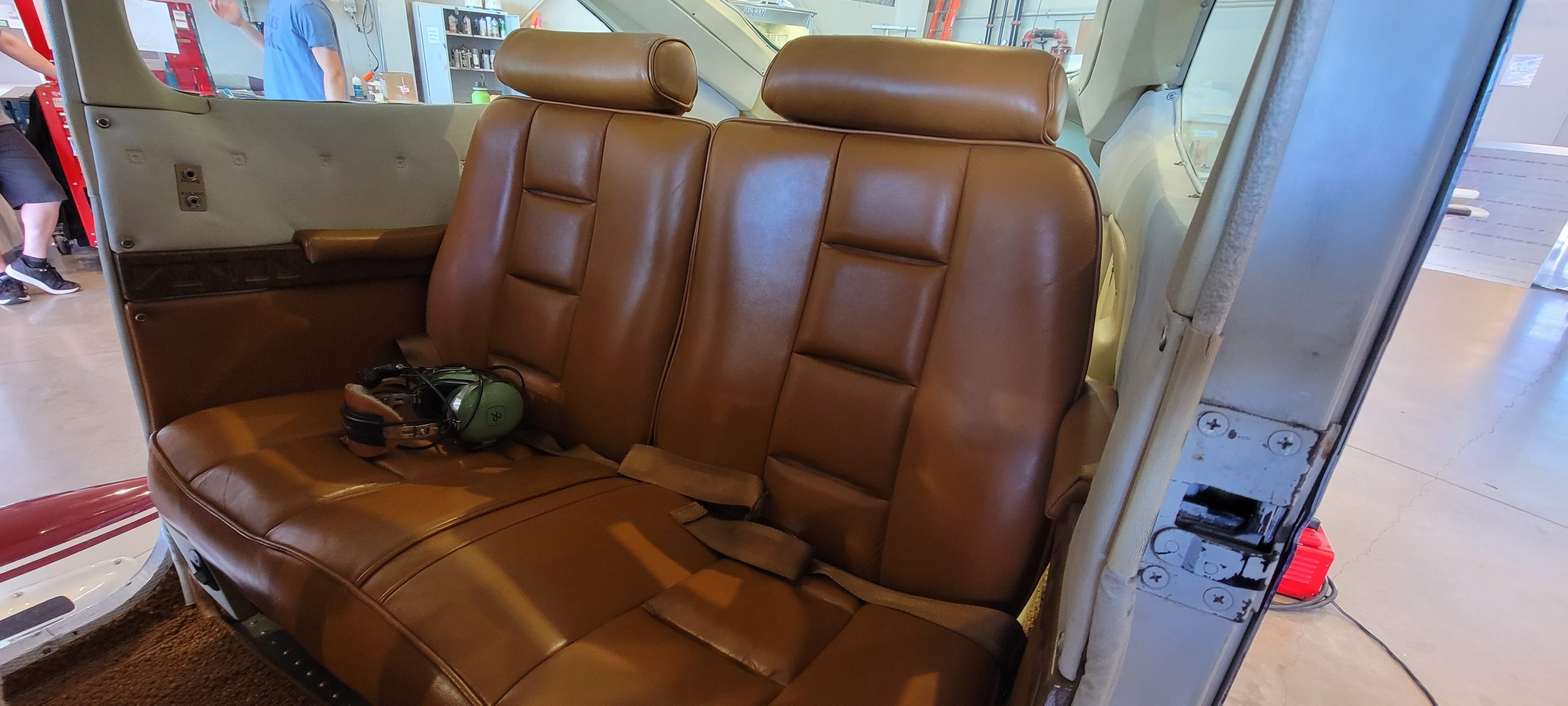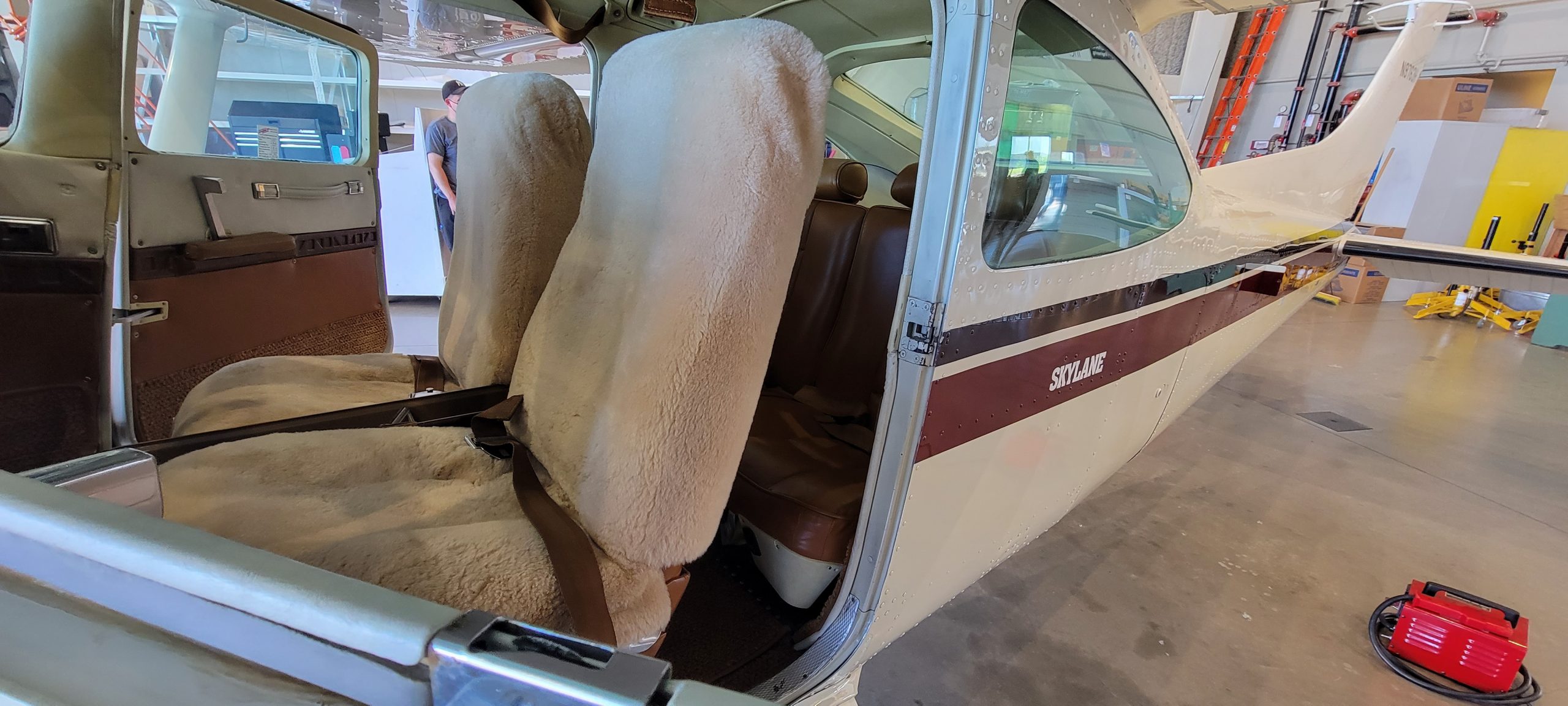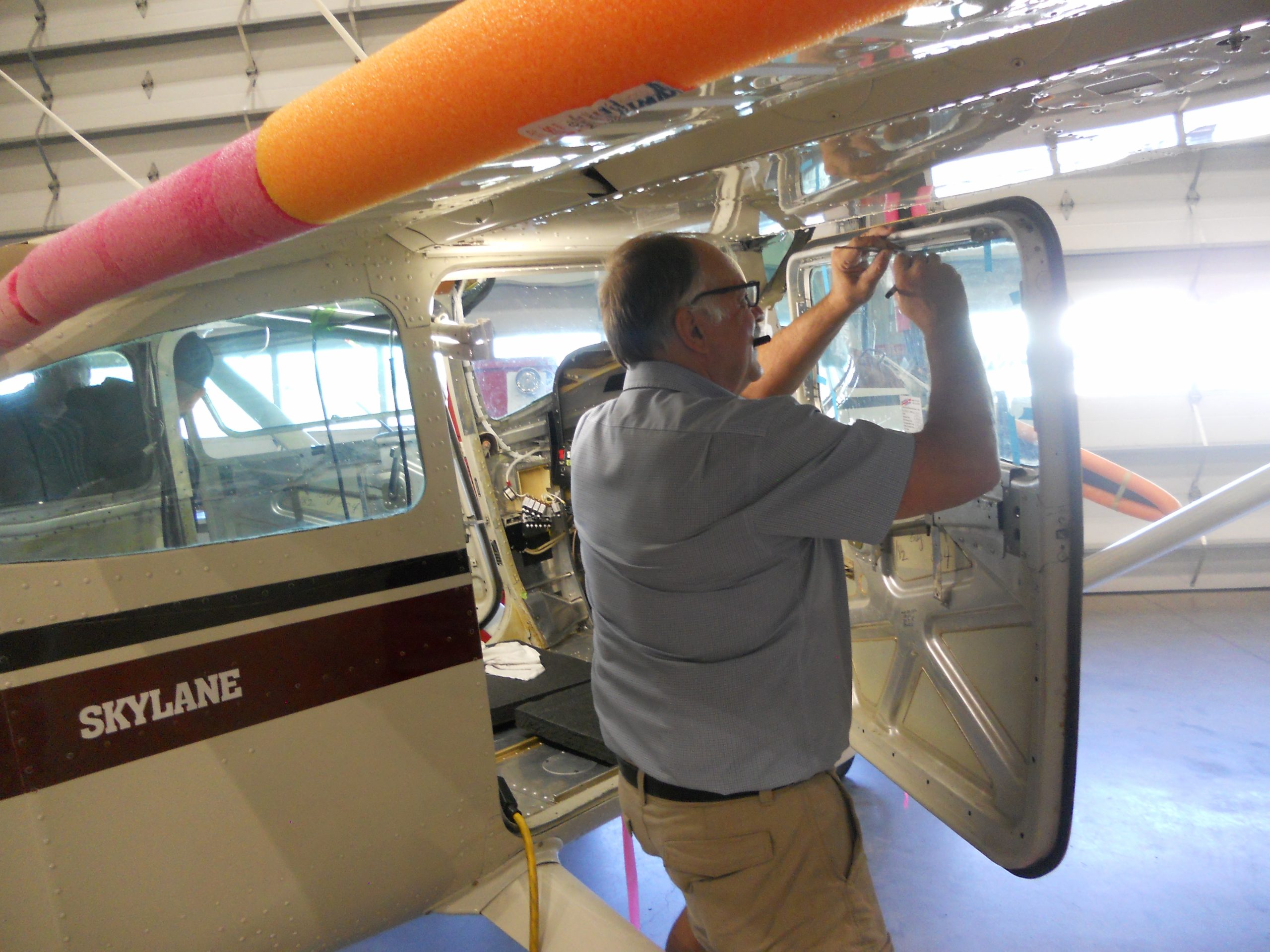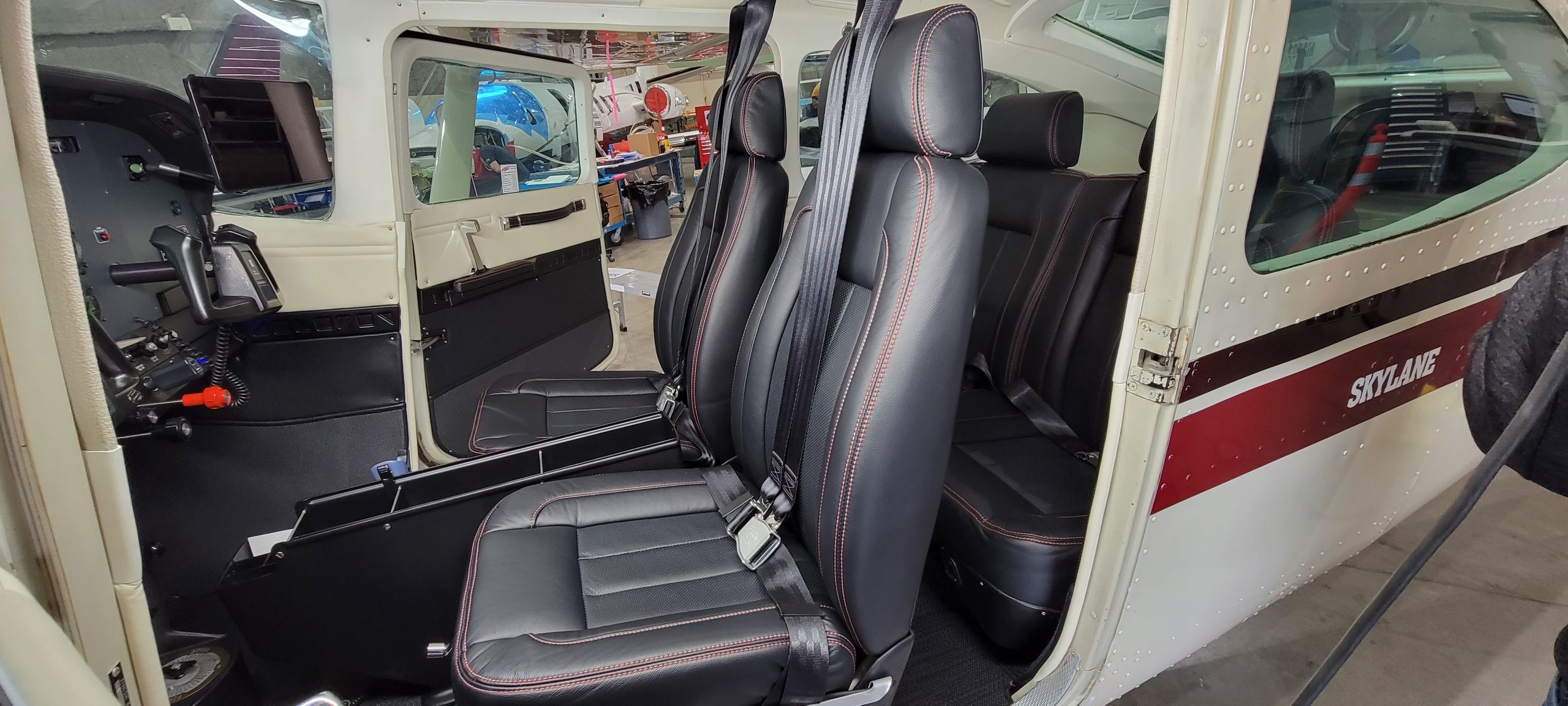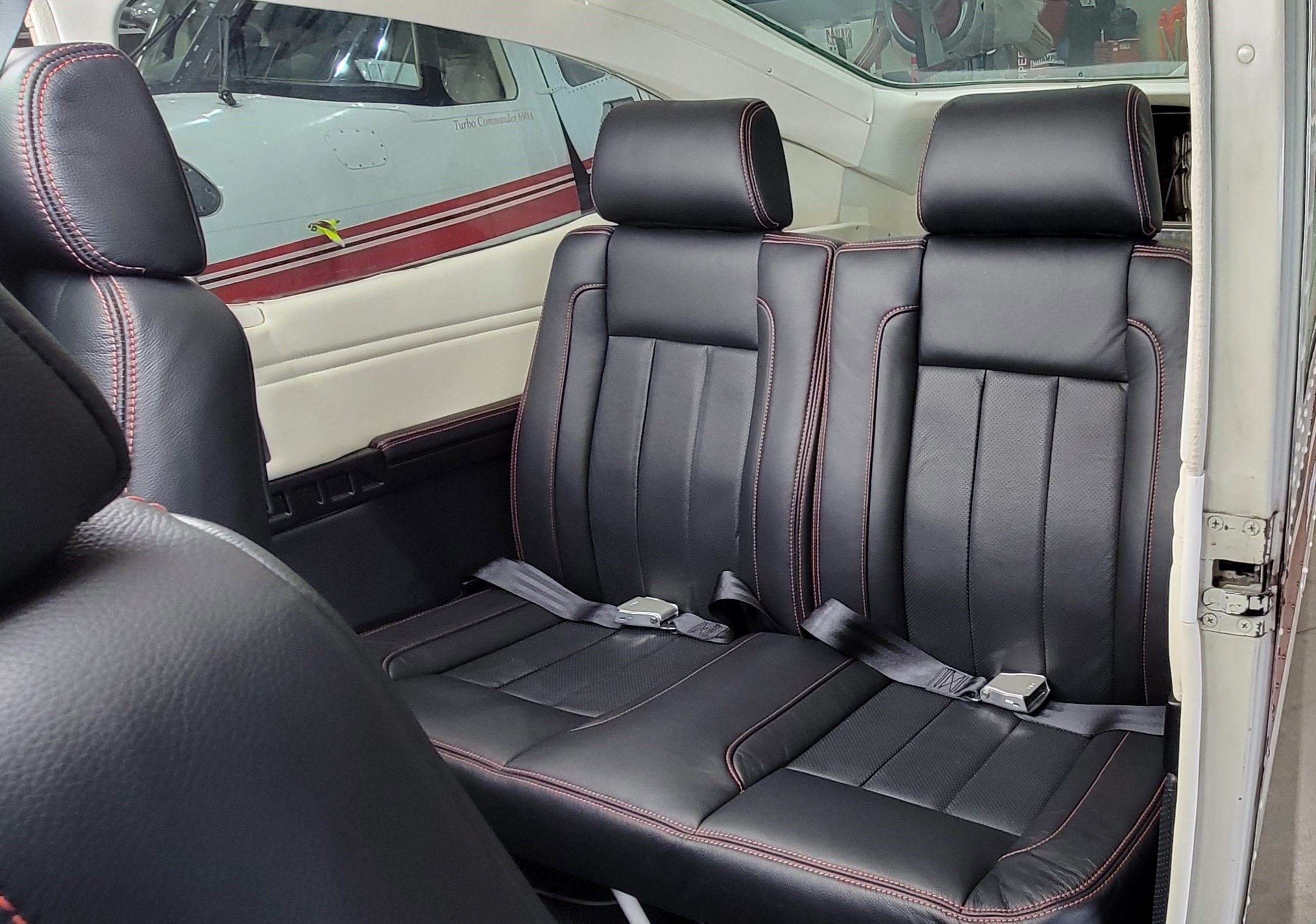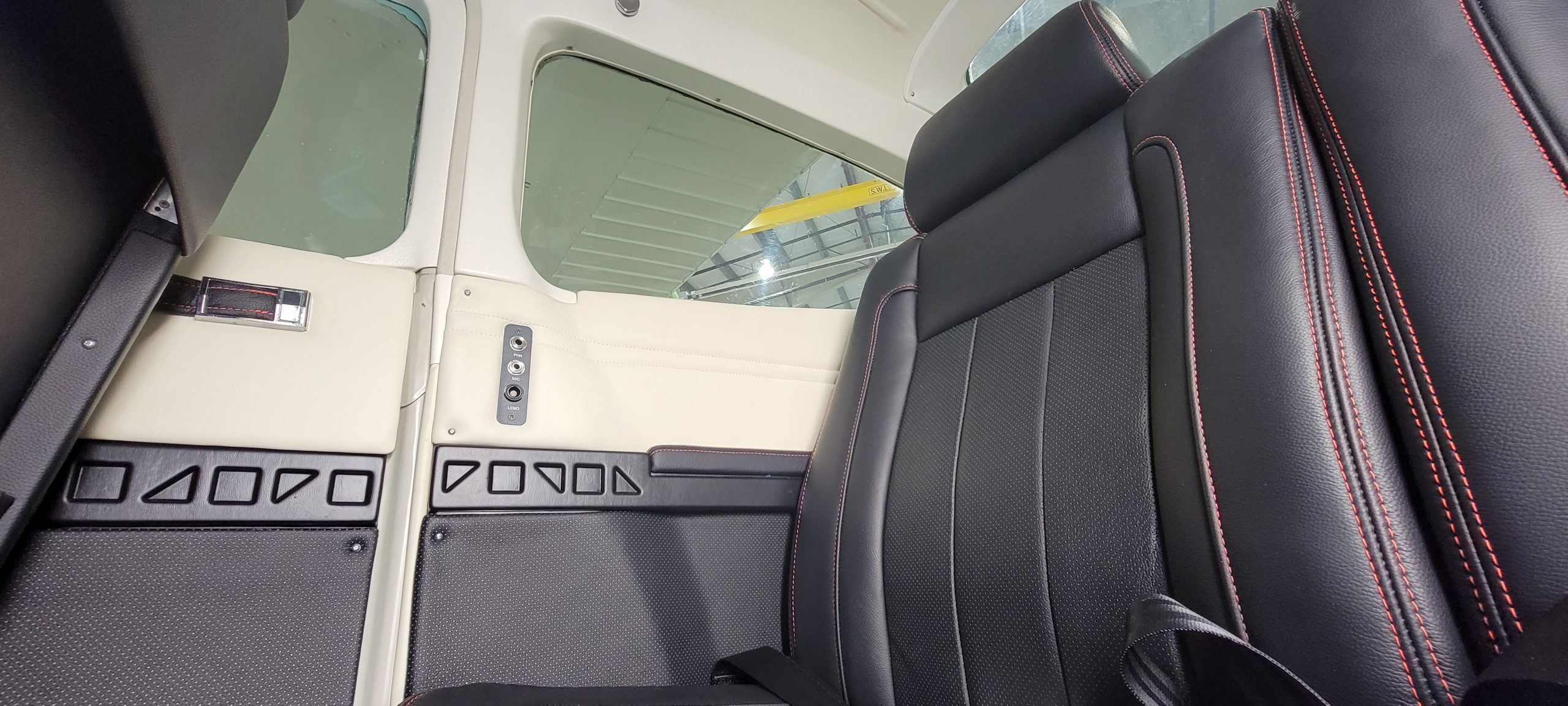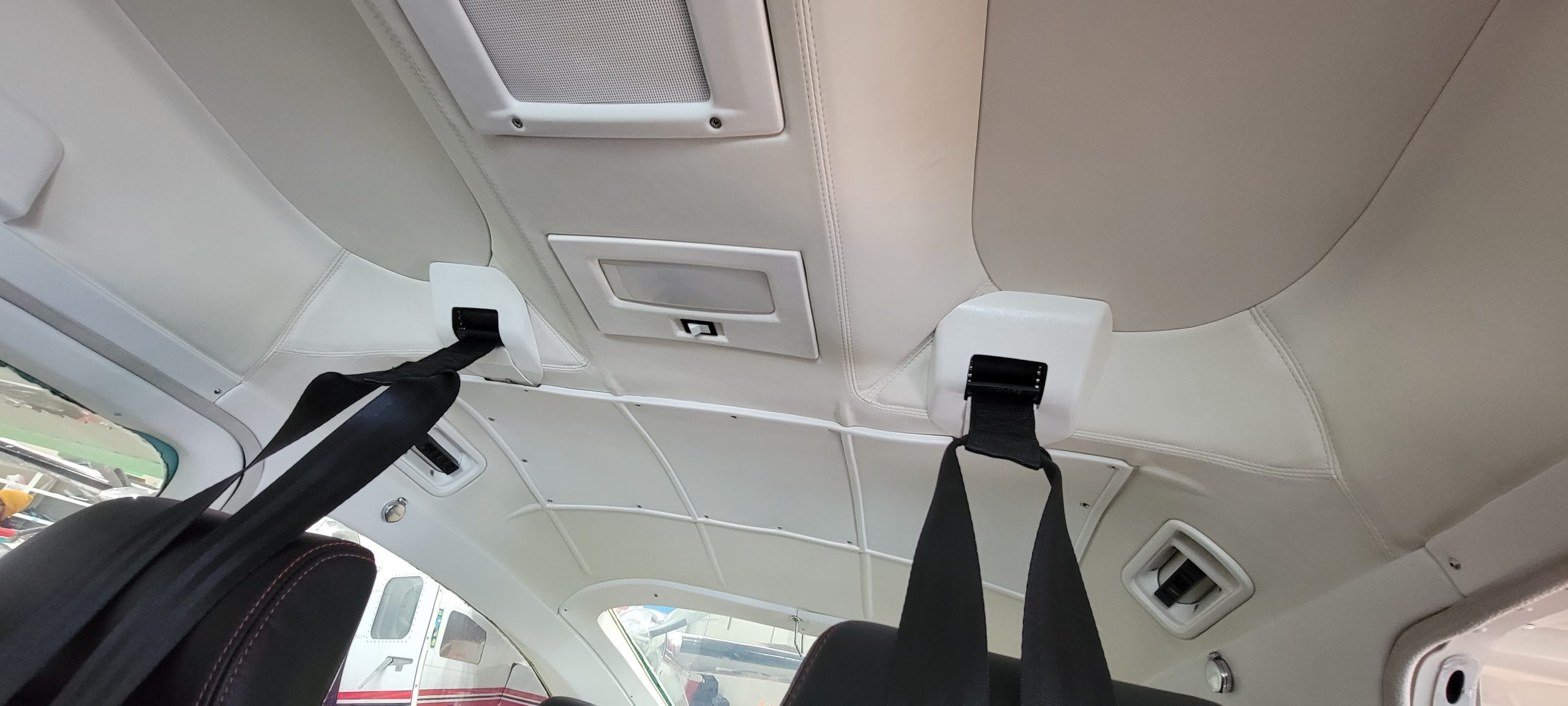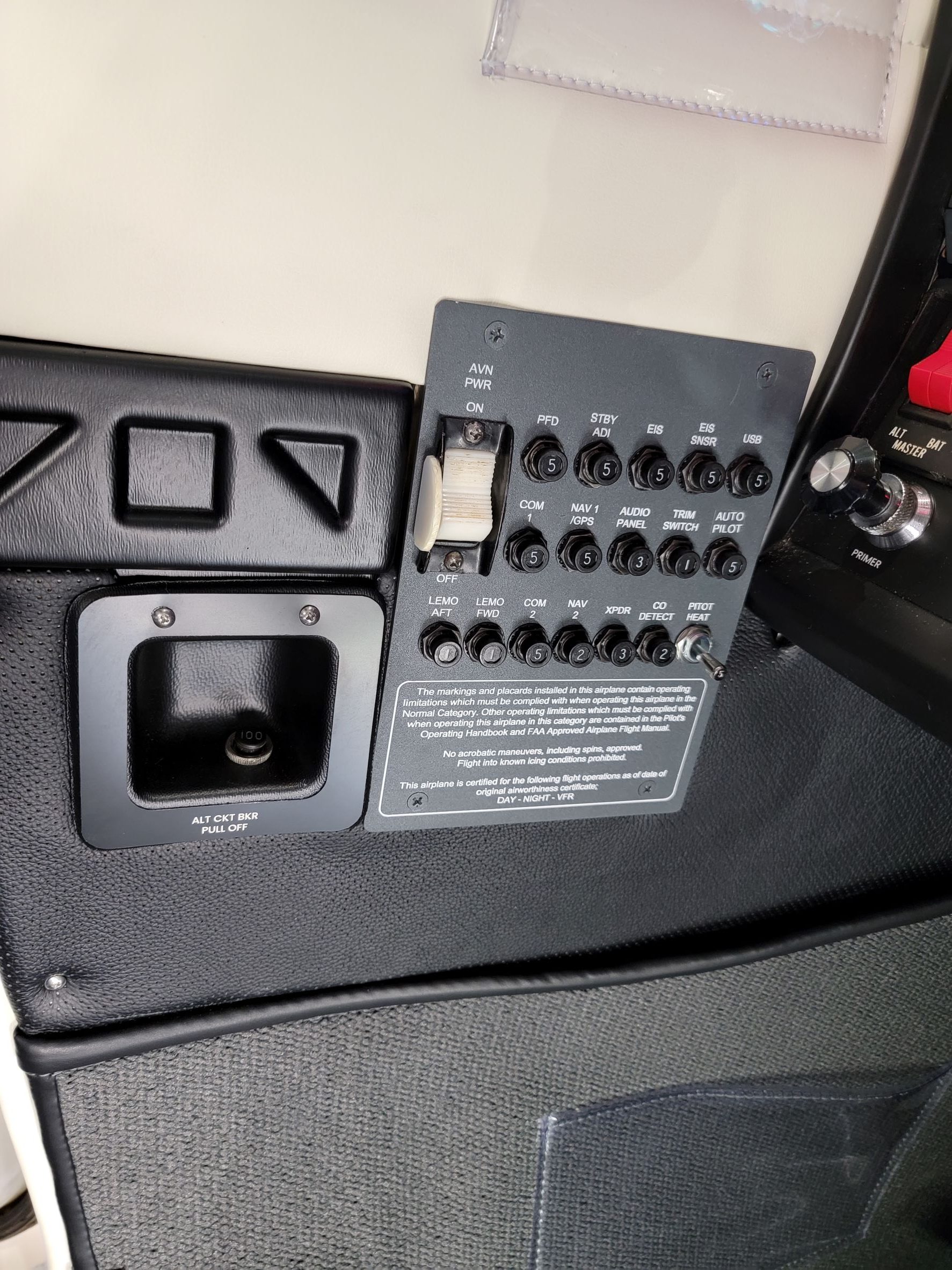Maxcraft transformed this dated 182 with a dream panel centered around Garmin’s G500 TXi primary flight display. Paired with the GTN 750 Xi, GFC 500 digital autopilot, and GI 275 engine indication system, along with a brand-new custom interior from Port Interiors, this 182 will look and feel better than when it rolled out of the factory in 1982, while also having enough technology to feel like an airliner.
Cessna 182 Goes Glass
1981 Cessna T182
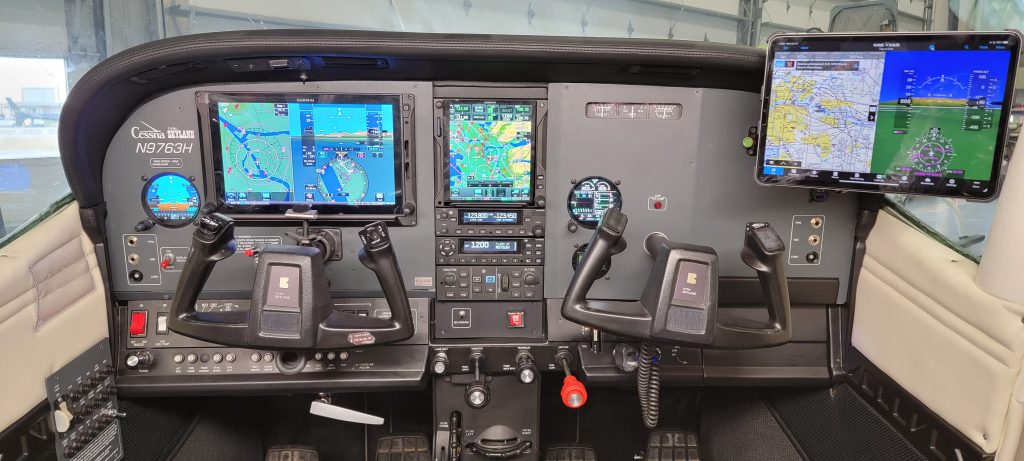
Aircraft & Owner:
The Cessna 182 is one of the most iconic and highly sought-after general aviation aircraft of all time. Initially introduced in 1956 as the tricycle gear style sibling of the earlier Cessna 180, which itself was a more powerful version of the Cessna 170, which would then evolve in a similar fashion into the Cessna 172. In 1980 Cessna received certification for the T182, which was the first 182 powered by a turbocharged engine. This particular T182 belongs to a business owner located in the small town of Buhl, Idaho.
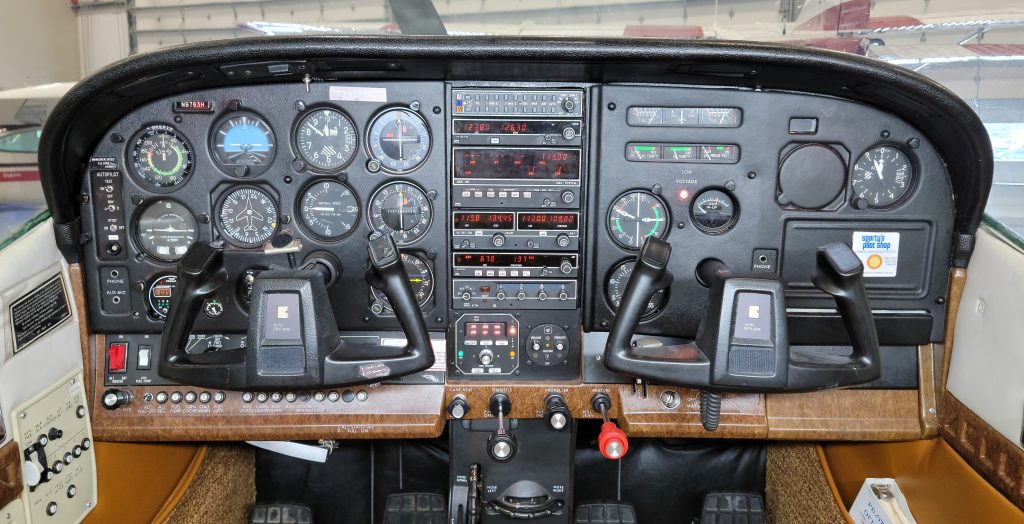
Need:
This project started out like many others, the owner had recently purchased the aircraft equipped with a basic avionics package and wanted to build their dream panel to increase functionality and safety. We started talking to this customer about a year before it arrived at our shop. While researching potential avionics options for his 182, the customer came across our website, and a project where we featured and aircraft much like his own, which led to him reaching out to us to discuss his options in further detail. After booking a slot in our hangar, the customer decided to delay, and we were also having supply chain issues on major components from multiple manufacturers.
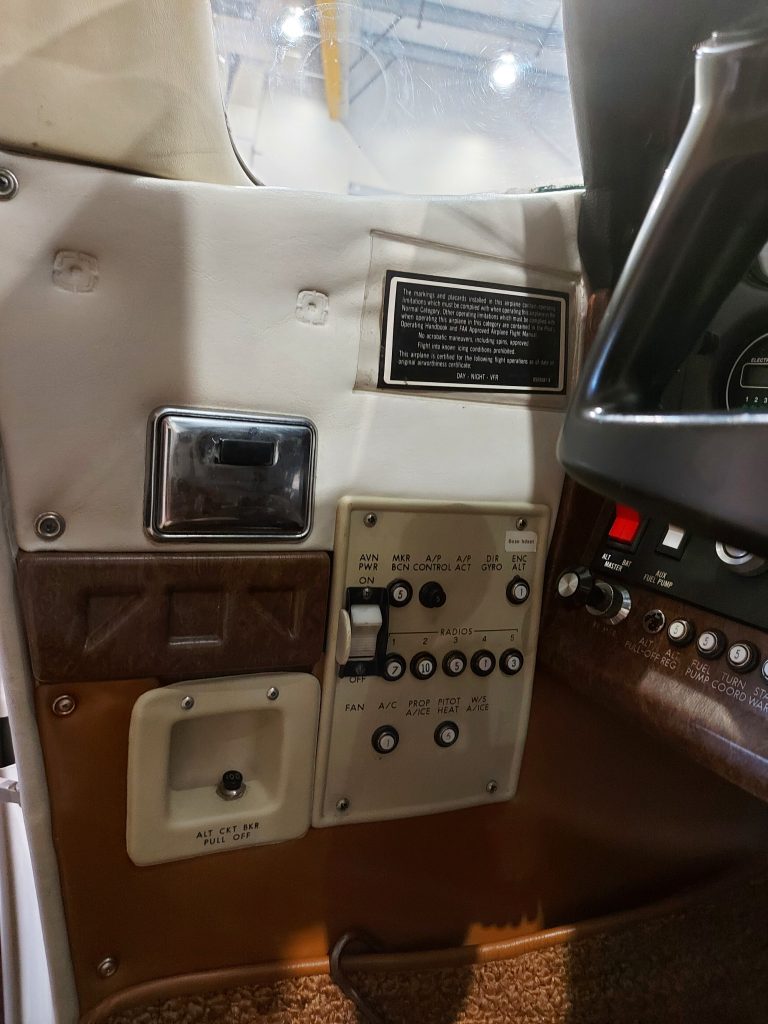
Our customer was looking to equip his 182 with the best of the best available for general aviation aircraft today. This would need to include a glass primary flight display, modern GPS and Navigation equipment to enable precise instrument flying, and a new ADS-B transponder to meet the mandate required to fly in certain airspace in the United States, and to receive the benefits of ADS-B “in” such as traffic and weather from ground stations. The customer was also contemplating installing a new interior, so while the aircraft was in our hangar, we arranged for one of our trusted affiliate partners, Port Interiors, to provide the customer with an estimate, along with many options. The benefit of combining avionics upgrades with interior upgrades is a decrease in overall aircraft downtime, along with a lower labour cost. When we have an avionics job of this size, much of the interior is required to be removed so we can run wires to various places, install antennas, and generally have enough room for our technicians to fit into the tiny compartments avionics equipment is typically mounted. This means whether we upgrade the interior or not, we still need to remove and reinstall it.
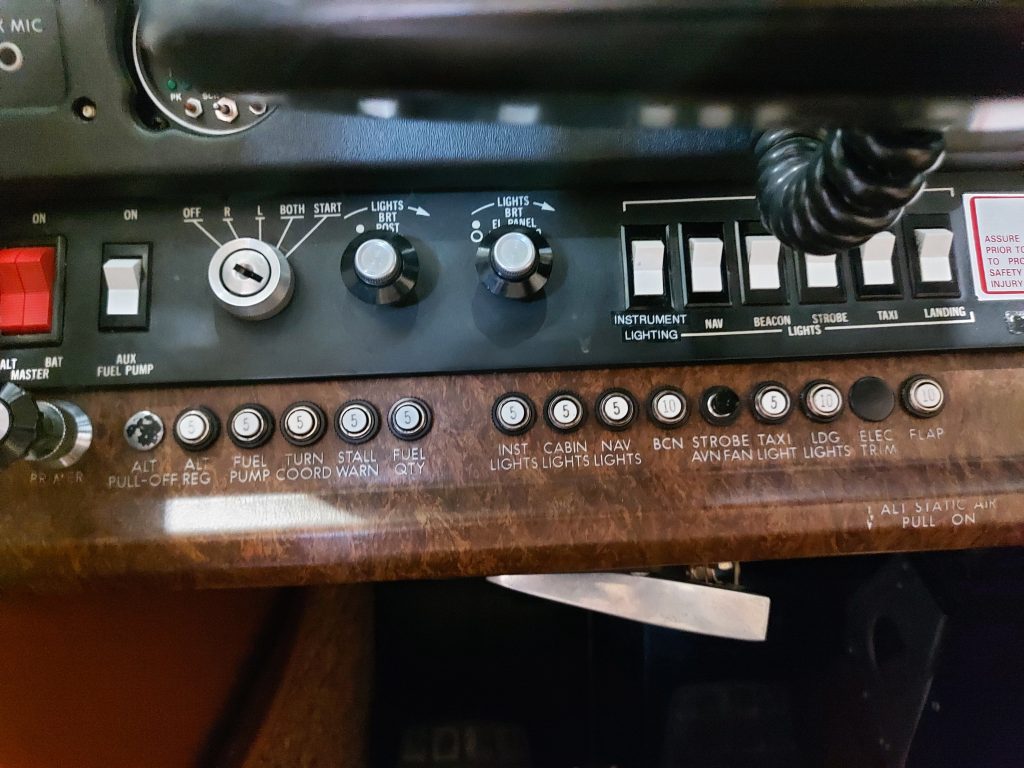
NEW EQUIPMENT LIST
| G500 TXi GDU 1060 | Integrated Primary Flight Display with Synthetic Vision Technology (Garmin) |
| GI 275 | Standby Flight Display and Multi Function Display (Garmin) |
| GMA 35C | Digital Integrated Audio Panel (Garmin) |
| GTN 750Xi | Touchscreen Flight Navigator and Multifunction Display (Garmin) |
| Smart Glide | Dedicated Smart Glide Button (Garmin) |
| GNC 255A | Secondary VHF Navigation and Communication Transceiver (Garmin) |
| GTX 345 | ADS-B “In”/”Out” Transponder |
| GFC 500 | Digital Autopilot (Garmin) |
| GI 275 EiS | Engine Indication System (Garmin) |
| GSB 15 | USB Power Supply (Garmin) |
| LED Lighting | LED Wing, Tail, and Beacon Lights (Whelen) |
| Aero 551 | Panel Mounted CO Detector (Guardian Avionics) |
| ELT 345 | 406mhz Emergency Locator Transmitter (Artex) |
| JMT-5030 | Panel Mounted Modular Tablet Mount (MyGoFlight) |
| MaxPanel | Custom Cut and Powder Coated Instrument Panel and Circuit Breaker Panel (Maxcraft) |
| New Interior | All New Custom Leather Interior (Port Interiors) |
| Seatbelt Kit | Inertia Reel 4-Point Shoulder Harness System Kit (B.A.S. Inc) |

Maxcraft Solution:
Our installation in this T182 is reminiscent of a number of projects we’ve recently featured on our website. Centered around the Garmin G500 TXi, paired with a GTN 750Xi, and most of the new equipment remaining in the Garmin ecosystem. The G500 TXi is a large 10.6” touchscreen primary flight display (PFD) which replaces the traditional six-pack instruments most pilots are familiar with. This will display to aircrafts, airspeed, altitude, attitude, and much more information in a compact, but easy to read package. As it’s an electronic “glass” display, it can be customized to suit the pilot’s preferences on what information to display, this includes splitting the display in half with the PFD on one side, and a multifunction display on the other showing a moving map, approach plates, and dozens of other menus all accessible within a couple taps. The GTN 750Xi is an all-in-one GPS and VHF navigator, communications transceiver, multifunction display, and central hub for many integrated Garmin products.
Garmin’s GI 275 has quickly become one of their most popular products among their general aviation offerings. Some aircraft owners find it a suitable upgrade from traditional analog instruments, while others install it more as a “just in case” device to act as a standby to a more featureful primary flight display system, like the G500 TXi. This project included the installation of two GI 275s. One if located just to the left of the PFD and will act as a backup should the primary display experience any issues. With a built-in battery backup, the GI 275 will continue to work even during a complete electrical failure. Garmin recently received approval a for a standby GI 275 to act as a multifunction display when the primary flight display is still operational making the GI 275 much more than just a contingency plan. The MFD function on the GI 275 can display a moving map, traffic, weather, and much more. The second GI 275 found in this installation is the engine information system located on the right-hand panel. This small display will replace the many different engine indication instruments found on an aircraft and will centralize all this information in one place in a compact and easy to read format making critical scans during flight a breeze. The GI 275 EIS is also integrated with the G500 TXi, which means if any unusual engine conditions are detected, the pilot will receive an immediate warning making it very difficult to miss a potential issue.
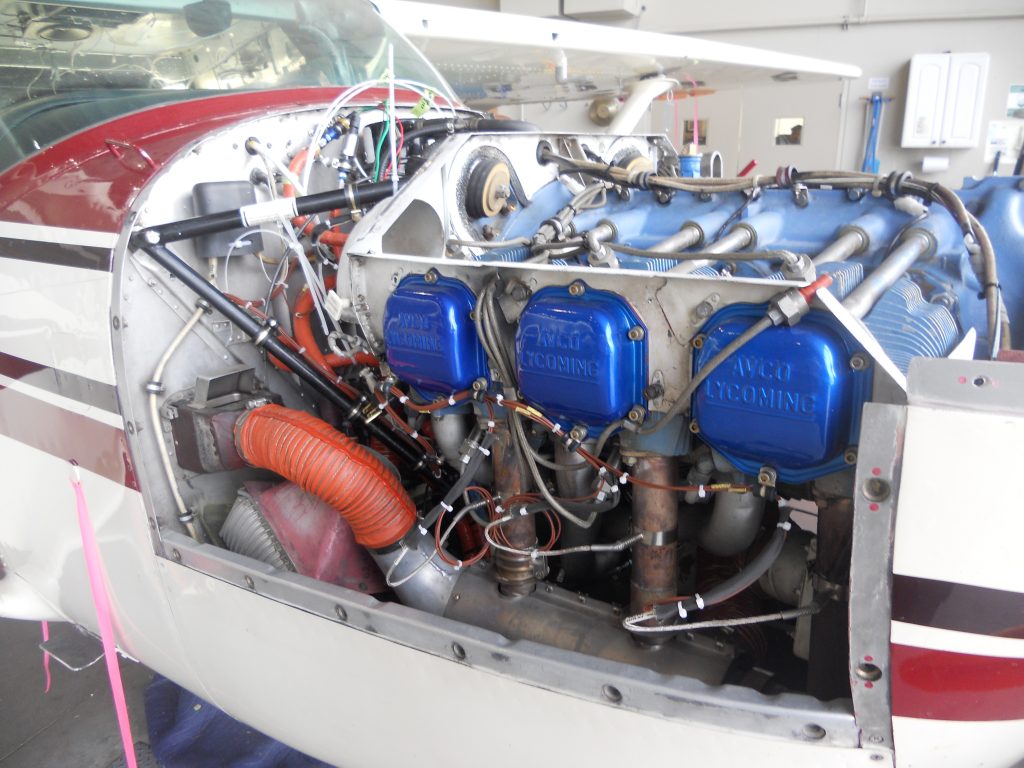
Garmin’s GFC 500 digital autopilot was designed from the ground up for general aviation aircraft, while still including many features which were once only available in the latest generation of airliners. Offering precise and smooth in-flight control, the GFC 500 is much more than just an autopilot. Even if the aircraft is being hand-flown, the built in monitoring the GFC 500 will automatically guide the aircraft back towards safe flight conditions if it begins exceeding the aircrafts recommended limits, such as an overspeed or underspeed. Additionally, Garmin’s Smart Glide technology found in the GTN 750 Xi integrates perfectly with the autopilot. In the event of an engine failure, the pilot can press the dedicated Smart Glide switch and the autopilot will immediately maintain the best glide speed, while the GTN gives the pilot a list of suitable airports within gliding distance, and can even change the transponder’s squawk code, and change the standby com frequency to 121.5.
With the FAA continuing to mandate ADS-B in certain airspace, one of our most popular options for compliance is the GTX 345 from Garmin. With both ADS-B In and Out capabilities, the GTX 345 transmits the aircraft’s GPS position via ADS-B, while also receiving data from other aircraft, and ground stations which can then be displayed on the GTN 750 Xi. This data can include traffic targets, weather, and even temporary flight restrictions.
While audio panels used to be as simple as a selector between different radios, the new generation of all digital audio panels offer much more. The GMA 35C is designed specifically to pair with the GTN 750 Xi by mounting behind the panel with the GTN. Audio controls are managed by a menu which is always easy to open on the GTN 750 Xi’s touchscreen. With the crisp and clean sound you expect from a digital audio panel, communicating with ATC and your passengers has never been easier.
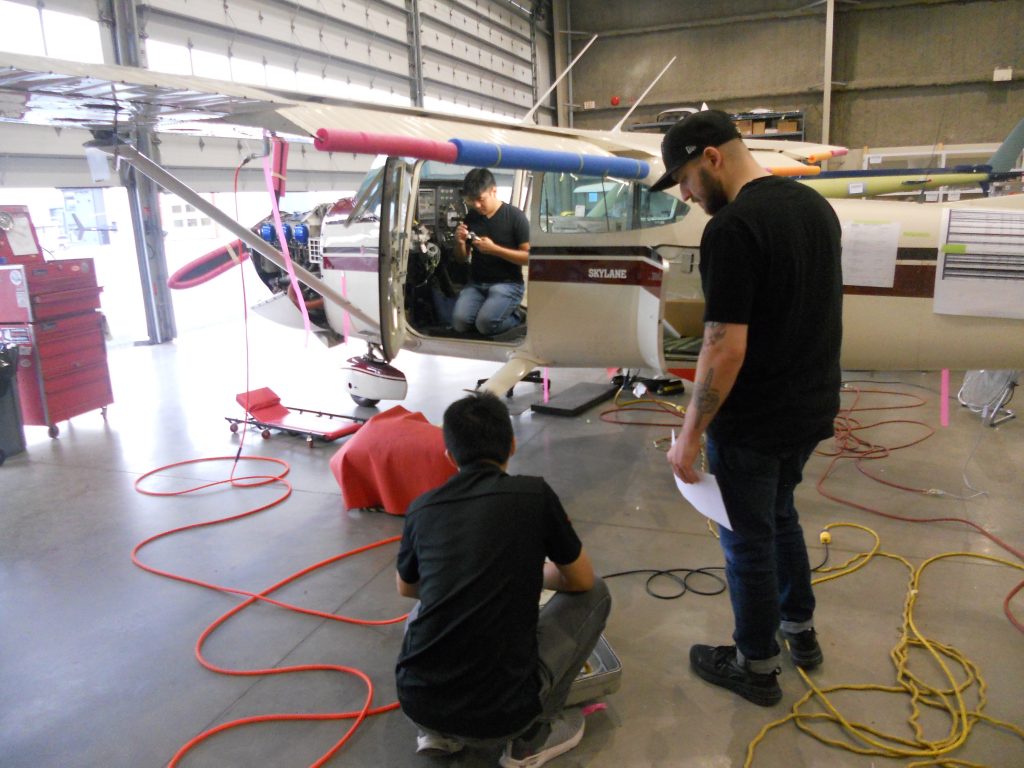
Along with the major upgrades we did, we also included some “while you’re at it items” to make life a little bit easier, and much safer. Replacing the old analog emergency locator transmitter with an Artex ELT 345 will make contacting search and rescue during an emergency significantly faster. By transmitting a GPS position to a constellation of satellites on 406mhz, along with the standard ELT tone on 121.5mhz, search and rescue will be able to locate a potential crash site without needing to use radio direction finding techniques. Many pilots are utilizing tablets for both flight planning, and inflight information. We included both a mounting solution to keep this customer’s iPad securely in place and within view, as well as USB charging ports to keep it charged even on the longest cross countries. A full set of bright LED lights from Whelen Aerospace Technologies were installed all around the aircraft, including wing, tail, and beacon lights which will make this plane easier to spot both at night and during the day to possible conflicting traffic.
The Old Interior:
Carbon monoxide poisoning is a real risk to pilots and passengers flying in fixed wing piston aircraft. The Aero 551 from Guardian Avionics is a panel mounted CO detector which is constantly monitoring the air within the cabin and will trigger alarms, both visual and aural through the headsets by connecting to the audio panel, if the levels begin increasing to unsafe levels allowing the pilot to both be aware of the problem and take corrective action immediately before the effects of carbon monoxide poisoning take over.
When the aircraft first arrived at our hangar, the interior was removed, and many pieces were sent to Port Interiors where they used them as a template to create a brand new, custom interior made specifically for this 182. The black leather seats with red accent stitching, along with the matching carpet, and the white leather side panels and ceiling make this aircraft look many times nicer than the day it rolled out of the factory.
The New Interior by Port Interiors:
“Steve and I started talking about upgrading my 182 back in the fall of 2021. I had already received quotes and visited two local avionics shops in my area and was still on the fence when I contacted Steve. After we visited and started to dial in what the 182 needed Steve put together a very comprehensive quote. I presented all these quotes to my local aviation mechanic and he was very impressed with the detail and work that Maxcraft Avionics did. Quote “ if they can rebuild and upgrade helicopters that’s who I would have do my work”. Steve was so awesome to work with. He would direct me in the right direction and add or eliminate equipment I did or did not need. He always tried to save me money but when it was something I needed I received a gentle push to make the right decision. After mentioning I wanted to also upgrade my interior, he lined me up with Fred at Port Interiors which did a fantastic job helping me pick materials and upgrade my 182 interior to keep up with the great looking glass panel Maxcraft built and installed in the plane. Steve, David, Aaron and the Maxcraft team did a fantastic job communicating during the entire project. It was like I was at the shop every week seeing what they had completed. They met and exceeded all my expectations. ”



